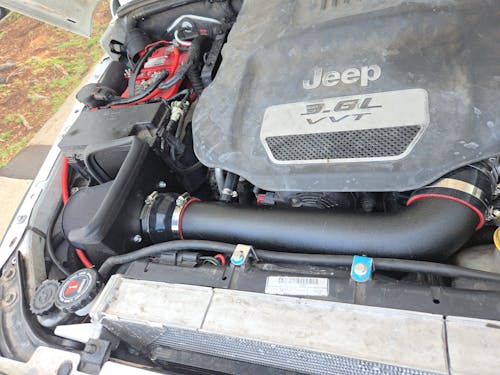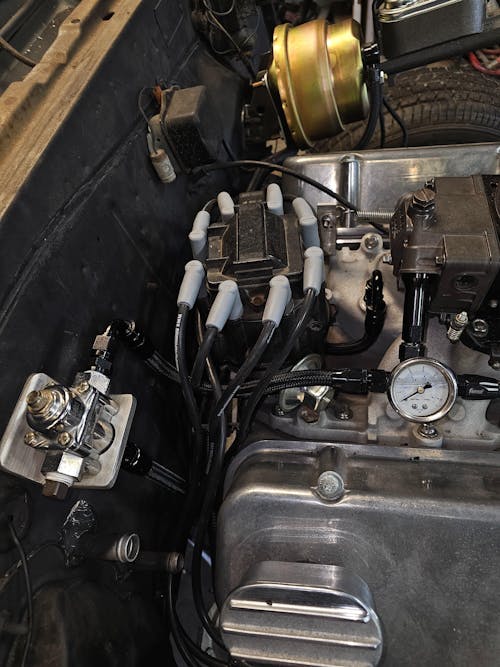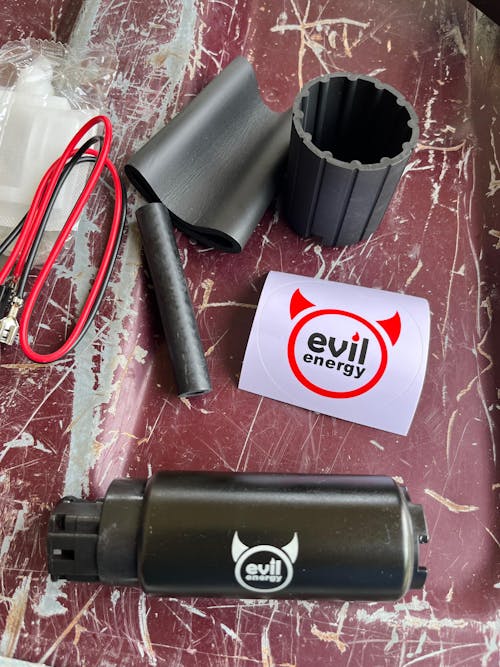How to Use Exhaust Clamp
Exhaust clamps are integral components in the maintenance and performance of a vehicle's exhaust system. They are crucial in securing the exhaust pipes, ensuring a tight and leak-free connection. Understanding their function and significance helps in effective vehicle upkeep and troubleshooting.
Getting to Know Exhaust Clamps
Exhaust clamps come in various styles, each serving a unique purpose in the exhaust system. The U-bolt clamp is commonly used for its simplicity and effectiveness in securing pipes. It's straightforward to install and provides a firm grip, making it a go-to choice for many.
Ball and socket clamps offer a different approach. They provide a solid connection that allows for some movement, which is crucial in parts of the exhaust system that experience thermal expansion. This clamp type is often found in areas close to the engine with higher temperatures.
Flat band clamps are known for their sleek design and are used where a less obtrusive clamp is needed. They wrap around the pipe, creating a tight seal without the bulkiness of other types. This makes them ideal for visible areas of the exhaust system where appearance is a consideration.
V-band clamps stand out for their durability and ease of assembly and disassembly. These are particularly useful in high-performance vehicles or in sections of the exhaust that need frequent servicing. Their design ensures a secure fit while allowing for quick removal when needed.
Incorporating an exhaust cutout valve into your system can significantly enhance performance. This valve allows for bypassing certain exhaust sections, reducing backpressure and increasing engine efficiency. It's a popular modification among car enthusiasts seeking that extra edge in performance.
Tools Required for Clamp Installation
Having the right tools on hand is essential for a smooth installation of exhaust clamps. A set of wrenches and sockets is fundamental, as they will be used to tighten the clamps and secure them in place. Make sure you have a range of sizes to accommodate different clamp types.
A good quality screwdriver, preferably a flat-head, is necessary to adjust some clamps. This tool is particularly useful for those hard-to-reach spots in the exhaust system. For precision and ease, a ratchet with an extension arm can be a real time-saver, especially in tight spaces.
Safety should always be a priority. Wear gloves to protect your hands from sharp edges and heat. Safety glasses are necessary to safeguard your eyes from any debris or sparks, especially if you're working under the vehicle.

Good visibility is key when working on intricate parts like exhaust clamps. Having a flashlight or a work light can be incredibly helpful. It assists in accurately positioning the clamps and avoiding missteps.
Gather these tools before you start the installation. This preparation not only saves time but also helps in ensuring the process is handled with care. Proper tools and safety gear are crucial for the effective installation of exhaust clamps.
Preparing Your Vehicle
Before you start working on the exhaust clamps, it's important to ensure your vehicle is in a safe and stable position. Park your car on a flat surface and engage the parking brake. This prevents any unwanted movement while you're working underneath.
Next, give your car's engine time to cool down. Working on the exhaust system when it's hot can lead to burns and other injuries. It's best to wait until the exhaust components are cool to the touch.
Elevating the vehicle is often necessary for better access to the exhaust system. If you're using a jack, always support the car with jack stands for added safety. Never rely solely on the jack to hold the vehicle up.
Clear the area around the exhaust system of any debris or loose items. You'll want a clean workspace to avoid any obstacles while installing or replacing exhaust clamps.
Check the exhaust system for any signs of damage or wear. This is a good opportunity to inspect other components like the muffler clamp and exhaust pipes. Identifying issues beforehand can save you time and effort during the installation process.
Having your vehicle properly prepared sets the stage for a smoother and safer clamp installation or replacement. Taking these steps helps avoid potential hazards and ensures you have unobstructed access to the exhaust system.
Identifying Exhaust Clamp Types on Your Vehicle
The first step in identifying exhaust clamps is to visually inspect the exhaust system. Look for the clamps connecting various sections of the exhaust pipes. Their design and placement can give you a clear idea of what type they are.
U-bolt clamps are easy to spot. They have a distinctive U-shape and are typically secured with two nuts on parallel threaded rods. This type is often found at connection points where pipes overlap.
Ball and socket clamps have a more subtle appearance. They connect pipes that have a ball-like end fitting into a socket. These are usually secured with a clamp that encircles the joint fastened with bolts.
Flat band clamps have a sleek, unobtrusive design. They appear as a thin band wrapped around the pipe joint, tightened with a bolt. These clamps are often used for their minimalistic look and effective sealing.
V-band clamps are characterized by their V-shaped profile. They consist of two flanges that connect the pipes, held together by an external clamp. This type is frequently used in high-performance and turbocharged vehicles for its secure and leak-proof seal.
Removing Old Exhaust Clamps
The process of removing old exhaust clamps starts with locating the clamp that needs replacement. Use your flashlight or work light to illuminate the area for a clear view. This will help you to identify the exact clamp that needs attention.
Using the correct size wrench or socket, loosen the nuts or bolts on the clamp. Take your time and apply steady pressure to avoid stripping the threads. If the clamp is rusted or stuck, applying a penetrating oil can aid in loosening it.
Once the clamp is loose, carefully remove it from the exhaust pipe. Be mindful of any sharp edges or rust particles that might be present. Gently wiggle the clamp back and forth if it's tight or rusted in place.
Before installing the new clamp, it's a good idea to clean the area where the old clamp was positioned. This ensures a clean and secure fit for the new clamp. Use a wire brush or cloth to remove any rust or debris from the pipe.
Installing New Exhaust Clamps
Begin the installation by positioning the new exhaust clamp around the pipe joint. Ensure it's aligned correctly; the clamp should sit evenly around the pipe without any slanting. This guarantees a uniform pressure distribution when tightened.
For U-bolt clamps, place the U-section over the pipe and thread the nuts onto the ends. Tighten them evenly, alternating between sides to ensure balanced pressure. Don't overtighten, as this can deform the pipe, causing leaks or damage.
When installing ball and socket clamps, align the ball end of one pipe with the socket of the adjoining pipe. Place the clamp over the joint and thread the bolts through. Tighten the bolts evenly, checking the alignment as you go to maintain a proper seal.
For flat band clamps, wrap the band around the joint and thread the bolt through the clamp. Tighten the bolt while making sure the band stays centered over the joint. These clamps need a snug fit but avoid over-tightening, as it could bend the pipe.
With V-band clamps, first, connect the two pipe flanges. Then, place the V-band clamp around the flanges and tighten the single bolt or nut. Make sure the flanges are fully seated within the clamp for a secure fit.
After installing the clamp, give it a gentle tug to ensure it's secure. A well-installed clamp should hold firmly and not move or rotate around the pipe.
While you're under the vehicle, it's a good idea to check the coolant overflow tank and other components for any signs of wear or leaks. Regular inspections like this help prevent future issues and maintain your vehicle's performance.
Conclusion
Exhaust clamps are crucial for a vehicle's exhaust system integrity and performance. Installing or replacing them is manageable for most vehicle owners, not just experts. Regular attention to these components enhances driving safety and efficiency.




![[20FT] EVIL ENERGY PTFE Fuel Line Kit, complete black hose & fittings set, 180-day return](http://www.ievilenergy.com/cdn/shop/files/Test-2025-Evilenergy-125598065_165x.png?v=1742144807)
![[16FT] EVIL ENERGY PTFE Fuel Line Kit, black braided hose, fittings, free shipping & return](http://www.ievilenergy.com/cdn/shop/files/Test-2025-Evilenergy-125598171_165x.png?v=1742144807)
![CPE Fuel Line[25FT]](http://www.ievilenergy.com/cdn/shop/files/25FTCPE_FuelLine_165x.png?v=1735220649)
![CPE Fuel Line[20FT]](http://www.ievilenergy.com/cdn/shop/files/20FTCPE_FuelLine_165x.png?v=1735220649)















